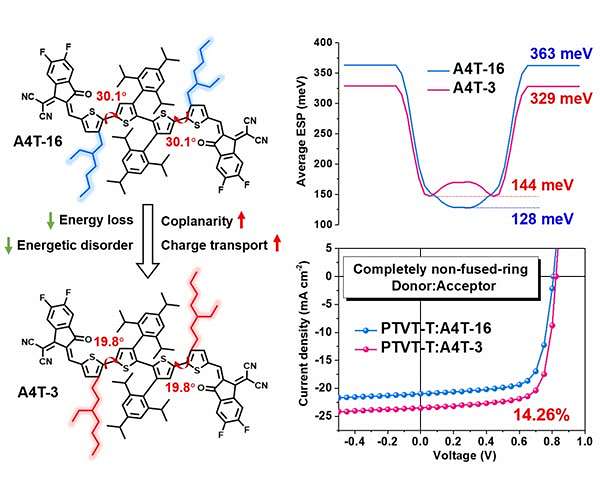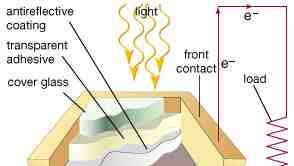The $369 billion package of tax incentives in the “Inflation Reduction Act” could spur record growth in wind and solar capacity if prices for these zero-carbon generation sources stay low, according to several computer models.
But the broad congressional package, which passed the Senate yesterday as part of the budget reconciliation process, raises several energy questions critical to the nation’s climate future: Where would the new turbines and panels go? And would an increase in renewable energy bridge a stark red-state-blue-state political divide that has defined the climate issue for the past decade?
According to a new report from Princeton University, the pace of annual wind power installations could double and solar generation could increase fivefold by 2025-2026 from 2020 levels, fueled by tax incentives from the law The measure would have the biggest impact on wind and solar power investment, which nearly doubles to $321 billion by 2030 from $177 billion without the legislation, said analysis released last week by the REPEAT Project Princeton ZERO Lab.
“This will drive a lot of investment [across] the country, especially in wind and solar-rich areas,” if the bill is enacted, said Jesse Jenkins, who runs the ZERO Lab.
“We’ve never seen this much opportunity out here,” said George Hershman, chief executive of San Diego-based SOLV Energy, which is the largest installer of utility-scale solar farms in the United States. “The demand will be there,” he said. Hershman, who is also president of the Solar Energy Industries Association.
Tax incentives fueled the dramatic expansion over the past decade for wind and solar generation, making them the fastest-growing source of new electricity in the United States, but their total share of generation of US power plants, from 12% last year, is one. fifth of what gas and coal plants produce.
The legislation would extend the investment tax credit for solar installations and the wind production tax credit for 10 years, reducing the cost of the projects to developers and, critically, locking in benefits for a decade, Hershman said. “By the time you’re 10 years out, you will have effectively changed the US energy portfolio,” he added.
Most new investment in wind and solar power will continue to tend to flow to regions where those resources are strongest, even as tax incentives lower the costs and risks of projects across the country, Jenkins said.
He singled out the states of Texas and the Great Plains, where wind energy is already highly concentrated, and the offshore areas of several Atlantic states. For solar energy, the main region is a band of Sun Belt states stretching from Florida to California, plus clusters of good solar resources in other states.
The new analysis follows an earlier one led by Jenkins and Princeton colleagues that assessed where new wind, solar and other zero-carbon resources would likely grow under a scenario that follows Biden’s climate goals. The 2020 “Net-Zero America” report projected that the states with the largest expansion of new wind farm in 2050 would be led by Texas, Iowa, Missouri, Nebraska and Montana. California, Texas, Florida and Georgia were the biggest winners in solar growth.
States’ partisan divide

However, the passage of the climate bill in the Senate is also putting a new spotlight on states that have been sharply divided along partisan lines for years. To see also : Power transfer: Solar panels target the Erie fire station. For wind and solar to grow exponentially, projects may need support from state and local officials in infrastructure such as transmission, as well as utilities.
The division of state views on clean energy was evident when the US Supreme Court sharply curtailed the EPA’s authority to regulate greenhouse gas emissions in June. Then the leaders of a group of 23 governors called the U.S. Climate Alliance vowed to continue the fight against climate policy on their own. The governors are Democrats except for the governors. Larry Hogan in Maryland, Charlie Baker in Massachusetts and Phil Scott in Vermont: three ticket-splitting states.
The decision “only strengthens our resolve to act with the boldness and urgency that the climate crisis demands,” the alliance’s co-chairs said. Kathy Hochul (N.Y.), Jay Inslee (Wash.) and Gavin Newsom (Calif.) in a statement in June.
“This [Supreme Court] ruling makes it clear that the actions of governors and state legislatures are more important than ever,” they said.
Meanwhile, a coalition of 22 Republican governors aligned against the energy and climate bill last week.
“With sky-high prices at the pump, the last thing Americans need is for Democrats to punish energy producers, which will ultimately hurt working families struggling to pay for gas, goods, food and public services,” said a statement from the Republican governors. shifting the focus of the debate from the long-term climate threat to the immediate pain of high fuel prices.
Partisan differences add to the uncertainty about the trajectory of low-carbon energy in many states, as some states are supporting goals that are years away and decisions on many projects have yet to be made. Support for specific energy projects does not always follow strict party lines either.
More than 20 states, plus Washington, D.C. and Puerto Rico, enacted more than 100 bills on carbon emission reductions or other climate change measures last year, according to the National Conference of State Legislatures in a report this April, “Energy Legislative Trends 2021.” .”
“Sea level rise, wildfires in the West, hurricanes in the Gulf, extreme weather events in Texas and Kentucky and a severe drought across the West,” added urgency to the legislative initiatives, he say the NCSL report.
“On the one hand, several states with clean energy goals continued to implement policies to move away from the use of fossil fuels, especially the use of coal. On the other hand, several states with economies linked to production of fossil fuels enacted policies aimed at preserving the use of fossil fuels, particularly the use of coal,” the report says.
“In addition, at least 17 states have moved in the past year to prevent municipalities from restricting the use of natural gas or other fuels in new buildings,” he added, highlighting lawmakers’ efforts to block the transition from fossil fuels to electrical energy for heating buildings. , a high priority on climate policy agendas.
In some red states like Indiana, where wind and solar projects have grown in recent years, governors have welcomed the expansion of renewables as sources of jobs and investment. When the Mammoth Solar project broke ground last year in Indiana, occupying three times the space of New York City’s Central Park, Republican Gov. Eric Holcomb and other GOP state office holders were there to give development support, for example. At the same time, Holcomb and his colleagues in Nebraska, Alabama and Georgia signed on last week to Republican governors’ criticism of the “IRA” legislation.
Last year, Nebraska committed to a goal of zero electricity by 2050, the first GOP-dominated state to do so, after a grassroots campaign to elect climate policy supporters to state boards. public power districts (Climatewire, December 10, 2021). ).
And the governors of Alabama and Georgia are supporting a transition to electric vehicles as the electric vehicle industry expands car and battery production in the region (Energywire, Dec. 1, 2021).
Still, states with high levels of renewable energy and aggressive climate goals have sometimes faced grid challenges. California, for example, is examining whether to keep its final nuclear plant open beyond 2025 to maintain grid reliability (Energywire, July 19).
“Maintaining energy reliability may require the extension or renewal of permits for electric generation facilities that are currently slated for retirement,” a Newsom spokesman said this summer.
Some states in the Climate Alliance have also rejected renewable energy. NCSL notes, for example, that Maine placed a moratorium on offshore wind projects in its territorial waters last year after opposition from the commercial lobster and fishing industries.
Regardless, the partisan divide on energy was clear in yesterday’s 51-50 Senate vote, with Republicans saying the package would make inflation worse, not help it. Democrats said the bill is critical to preventing a climate catastrophe.
“By protecting America’s energy security and reducing carbon pollution by nearly 40 percent by the end of the decade, it will lower energy costs and help save the planet,” said House Speaker Nancy Pelosi. in a statement. The House is expected to vote on the measure this Friday (E&E Daily, Aug. 7).
Senate Minority Leader Mitch McConnell (R-Ky.) called the package “a so-called climate bill that will have no significant impact on global temperatures.”
House Minority Leader Kevin McCarthy is leading House Republican opposition to the measure. Last week, in a policy speech to South Carolina Republicans, he linked today’s high gas prices to the energy crisis of the 1970s and mocked then-President Jimmy Carter for putting solar panels on the roof of the White House .
The transmission factor
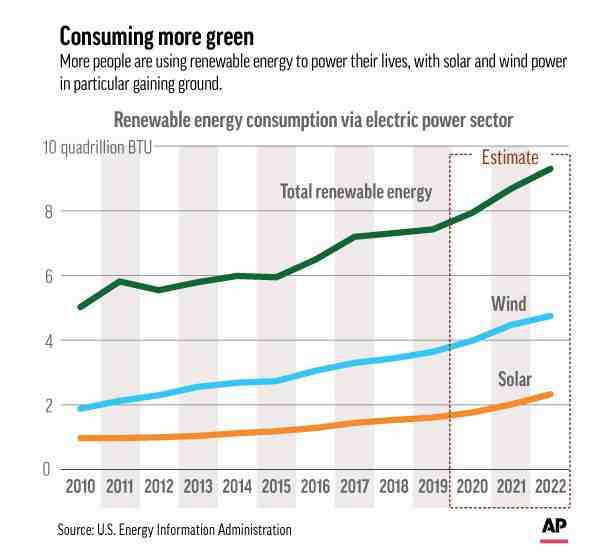
Another wild card for renewables after the debate in Congress is the construction of the necessary transmission to move the energy from the projects to the population centers. This may interest you : EU ministers set renewable energy target at 40 percent.
Energy Secretary Jennifer Granholm and the Federal Energy Regulatory Commission, under Biden-appointed chairman Richard Glick, are pursuing separate but parallel strategies to expand the high-voltage transmission system aging of the country to open access to more wind and solar energy resources and strengthen it against extreme weather. havoc (Energywire, April 22).
Both initiatives have the support of elected state leaders and regulators, who have powerful influence over where and when new lines are installed and approved.
The advocacy group Americans for a Clean Energy Grid (ACEG) has identified two dozen proposed long-distance transmission lines that, if built, could add 60,000 megawatts of clean energy to the nation’s supply. Most of the lines would cross the borders of the states in opposition in the climate debate. Many would hand over power from red-state regions to Democratic-voting cities and suburbs.
Midcontinent Independent System Operator (MISO) is the grid operator in a 15-state region that stretches from the Canadian border to the Gulf of Mexico, with the best onshore wind regions in the country.
Last month, MISO approved 18 power line projects that would funnel $10.3 billion into the states the lines pass through. Completing them could add up to 53,000 MW of renewable energy (Energywire, July 26).
Another example is the partially completed 2,000-mile Energy Gateway transmission project led by Portland, Oregon-based PacifiCorp. When completed, it could deliver 4,000 MW of wind power from the red state of Wyoming to the blue states of Oregon and California.
Rob Gramlich, president of consulting firm Grid Strategies LLC and co-founder of ACEG, said the new lines would open the door to carbon-free energy, if built.
“Anywhere you can build transmission to good renewable resources, I expect that generation to be connected as soon as transmission is in place,” he said.
However, transmission lines have faced pushback in many communities for a variety of reasons, including concerns about disrupting local landscapes and communities.
The expansion of clean energy in red and blue states may also get a boost from utilities that have set goals to reduce or eliminate greenhouse gas emissions from their power sources , Gramlich said.
According to the Edison Electric Institute, 39 of its member electric utilities, including most of the nation’s largest, have goals of achieving carbon-free electricity by 2050 or earlier.
However, some utility watchdogs remain skeptical that the companies will move fast enough to meet their goals.
But Gramlich said, “Forget about what drives them. Goals are goals. Utilities have important goals they want to achieve. Some of that is driven more by state policies and, in other cases, utilities publics are acting where there are no meaningful policies.”
Looking at MISO, Gramlich said, “This is a very diverse region. Your states’ views on climate are all over the map.” If grid planners in other regions do what MISO’s leadership did, aligning transmission projects with utility goals, the transition will go ahead regardless of what state political leaders say about the climate , he predicted. .
Supply squeeze and EVs
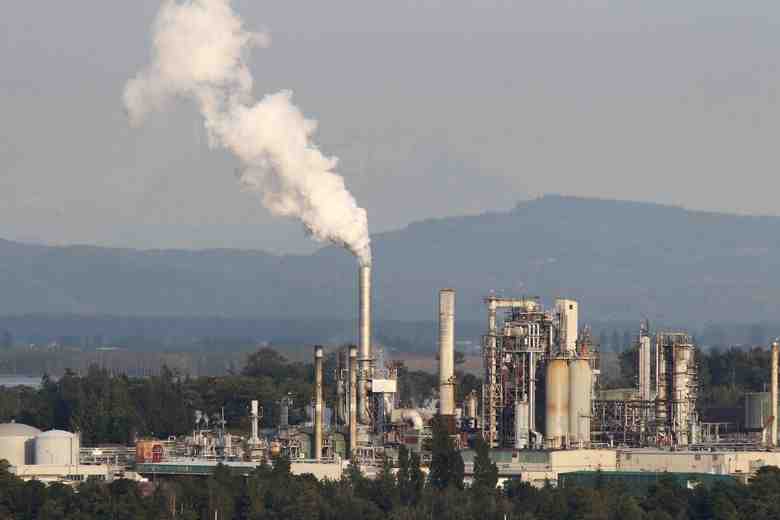
Projections of wind and solar development increases in the bill come with some caveats.
For example, the impact of the package’s clean energy incentives will be reduced if wind and solar prices are driven up by shortages of critical materials, restrictions on essential imported components, or labor shortages. qualified work, warn researchers from the Rhodium Group and Princeton’s REPEAT team.
“Several constraints that are difficult to model may limit these growth rates in practice,” said the new Princeton analysis, which listed objections to new power lines and pipelines, and supply chain and hand shortages of work
Battery storage is also not technologically at a level that would allow 100 percent renewables, the researchers say.
An analysis updated last week of the Senate climate package by the Rhodium Group calculated that if clean technologies become increasingly cheaper, following the trend of the past decade, and natural gas and oil prices remain expensive, the energy and climate legislation would push greenhouse gas emissions in the economy roughly 44 percent below 2005 levels by 2030, close to the Biden administration’s 50 percent goal.
But if the result is reversed and clean energy becomes more expensive and fossil fuels are cheap, carbon emissions would be just 31 percent below the 2005 mark, according to the group’s model.
A separate analysis by ICF International Inc. earlier this year found that if the future of wind and solar is financially challenged, leadership by states with strong clean energy goals could be vital.
ICF looked at the District of Columbia and the 15 states that have pledged to accelerate carbon-free vehicle sales. If these states’ targets were met for all road vehicles in the 15 states, but not the remaining states, transportation carbon emissions would fall 39 percent in 2050 from 2020 levels, leaving the U.S. off the path to zero carbon. emissions at mid-century, ICF found.
However, if all states meet the targets set by the 15, the reduction in carbon emissions would increase to 67 percent by 2050, according to the ICF report. “The same level of electric vehicle adoption could reduce emissions by up to 82 percent if those electric vehicles were charged from an electricity grid powered primarily by clean energy,” the researchers concluded.
A national climate policy ultimately needs a nation behind it, said John Larsen, a Rhodium Group partner who leads the firm’s U.S. energy system and climate policy research. “If America is going to have a sustained, holistic approach to solving climate change, you’re going to need everyone on board.”
A version of this report was first published on E&E News’ Energywire. Access more comprehensive and in-depth reporting on the energy transition, natural resources, climate change and more at E&E News.
How fast can we transition to renewables?
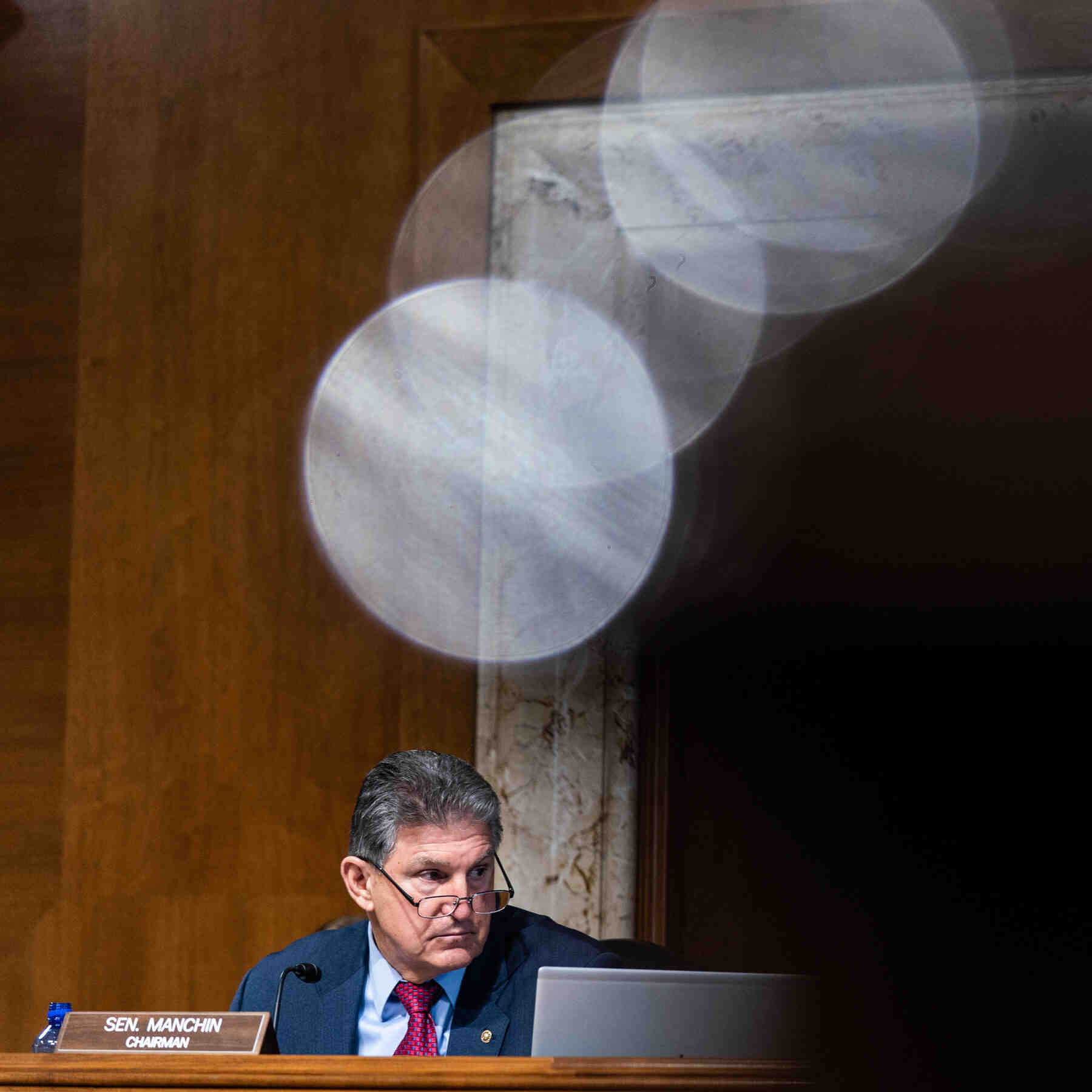
The adoption of renewable energies continues Current forecasts suggest that we are between the two paths. Industry observers predict that demand for fossil fuels is currently likely to peak around 2029, but it may take many more years for clean energy production to overtake fossil fuels.
What would happen if we switched to renewable energy?
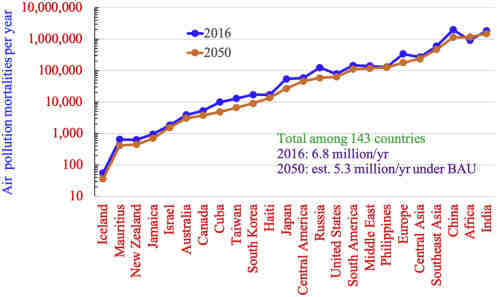
The transition to renewable energy is good for people and the planet. It will mitigate climate change by reducing greenhouse gas emissions, improve human health and the environment by reducing air and water pollution, and support jobs and economic development.
Can the world survive on renewable energy? Without a doubt, renewable energies are the only viable energy system in the long term. Coal, oil and wood, which were the main sources of energy, are not renewable resources. These resources are not long lasting. Fossil fuels have been part of human life for a long time.
Why havent we switched to renewable energy?
It all comes down to cost and infrastructure. Ultimately, the biggest obstacle to the development of renewable energy is its cost and logistical barriers. Once the infrastructure for renewable energy sources grows, we will see it take off in popularity and use.
Can we fully switch to renewable energy?
According to the research, it is possible to shift to a fully sustainable global energy landscape within the next 30 years. Greater geographic connectivity of solar, wind and hydropower can reduce energy consumption and lower costs.
Why havent we switched to solar energy?
It turns out that there is a lot of inertia built into the energy system. Many of us might assume that the reason so much power still comes from gas and coal-fired power plants is simple economics: those fuels are cheaper.
Why 100% renewable is not possible?
Renewable energy is energy that can be replenished quickly. Oil and coal take millions of years to make, so they are not renewable. Nuclear power uses uranium, also non-renewable.
Would switching to renewable energy hurt the economy?
The world must end its dependence on fossil fuels as soon as possible. This is the only sensible response to climate change and the economic dilemma of declining oil, coal and gas resource quality and rising extraction costs.
How can renewable energy make an impact on the economy?
Renewable energy can also be part of a strategy to help communities currently dependent on fossil fuel production diversify their economies. Solar, wind and geothermal energy also reduce our dependence on fossil fuels, which protect clean air and water and help address the threat of climate change.
Is renewable energy good for the economy?
Benefits of renewable energies Generating energy that does not produce greenhouse gas emissions from fossil fuels and reduces some types of atmospheric pollution. Diversify energy supply and reduce dependence on imported fuels. Creating economic development and jobs in manufacturing, installation and more.
Would transitioning to renewable energy hurt the economy?
Renewable energy improves human well-being and overall well-being far beyond GDP. Doubling the share of renewables in the global energy mix will increase global GDP in 2030 by 1.1%, equivalent to $1.3 trillion. services as well as fossil fuels.
Can the US switch to clean energy?
The US could transition to 90% renewable energy by 2035 at no additional cost. With solar and battery storage costs falling, the US could be powered primarily by renewable energy much sooner than originally thought.
Is the US Ready for Clean Energy?
Can we switch to clean energy?
According to the research, it is possible to shift to a fully sustainable global energy landscape within the next 30 years. Greater geographic connectivity of solar, wind and hydropower can reduce energy consumption and lower costs.
Is it worth switching to renewable energy?
Benefits of renewable energies Generating energy that does not produce greenhouse gas emissions from fossil fuels and reduces some types of atmospheric pollution. Diversify energy supply and reduce dependence on imported fuels. Creating economic development and jobs in manufacturing, installation and more.
Is it cheaper to switch to clean energy?
It is now cheaper to switch from coal to clean energy, compared to switching from coal to gas, thanks to the falling cost of renewables and energy storage, climate analytics firm TransitionZero has found. batteries, along with increased gas volatility. prices.
Can we have 100% clean energy?
Research published in Energy Policy suggests that converting the entire world to 100% renewable energy by 2050 is possible and affordable, but requires political support. Many more wind turbines and solar energy systems would need to be built, but it would not use bioenergy.
Why has the US not switched to renewable energy?
It all comes down to cost and infrastructure. Ultimately, the biggest obstacle to the development of renewable energy is its cost and logistical barriers. Once the infrastructure for renewable energy sources grows, we will see it take off in popularity and use.
What stops the US from completely converting to renewable energy?
Lack of public demand. Nor are we doing ourselves any favors by not talking about the benefits of renewable energy. There is an incredible lack of public demand for the development and institution of renewable energy sources, and this means that key decision-makers are not motivated to make major changes.
Should the US switch to renewable energy?
The new poll finds that 69% of Americans say the top energy priority for the country should be the development of renewable energy sources, such as wind and solar; fewer (30%) prioritize expanding the production of fossil fuels, such as oil, coal and natural gas.
Can a city run on 100% renewable energy?
Burlington was one of the first cities in the United States to get 100% of its electricity from renewable sources, and one of more than 40 worldwide. The largest city in the northeastern state of Vermont, the Burlington region is known for its stunning forests, maple syrup and mountain ski slopes.
Can a city be fed with renewable energy? Cities that report that at least 70% of their electricity comes from renewable energy. Cities powered by renewable energy are defined as “city-wide”, not just municipal. Data on the renewable energy mix is self-reported using the CDP questionnaire. These data come from the cities that communicated to us in 2015, 2016 and 2017.
Can the world get to 100% renewable energy state?
The capacity for renewable energy is huge: “Earth receives 23,000 TW of solar energy, while global energy consumption is 16 TW. So [100 percent renewable energy] could be possible up to and all if we capture just 0.07 percent of the sun’s energy.” says MIT energy expert Professor Xiao Yu Wu.
Can we go full renewable?
Well, according to many researchers, a world powered entirely by renewable energies such as wind, solar, hydro, etc., is not at all reasonable. In fact, they predict that we will be able to achieve this by 2050. In the past, many countries have made it their mission to be completely renewable, and some have been very successful.
Can the US go 100% renewable?
Although renewable supply resources are an important and growing part of the portfolio, 100% renewable energy is not feasible in the United States today. Below are some reasons why 100% renewable energy resources will not be feasible in the coming decades.
Can we rely 100% renewable energy?
If the world were to move away from fossil fuels, could we generate the energy needed to power the world with 100% renewable energy? According to a new report from Finland’s LUT University and Energy Watch Group, a German non-profit organization, the answer is yes.
Can renewable energy replenish themselves?
Types of resources Resources are characterized as renewable or non-renewable; a renewable resource can be replenished at the rate at which it is used, while a non-renewable resource has a limited supply. Renewable resources include wood, wind and solar, while non-renewable resources include coal and natural gas.
Can we use renewable energy forever?
“We all know that renewable energy is limitless and will last forever,” Ban said in the United Arab Emirates capital, Abu Dhabi. “It offers us great security and peace of mind”, he added. “Costs have come down so quickly that it is now often the cheapest option.
Can human survive only on renewable energy in future?
People will no longer have to depend on fossil fuels for energy. They may include the use of renewable energy sources such as hydroelectric power, wind power, solar power and geothermal power. Furthermore, this proves to be a guarantee for human survival based on the above points.

